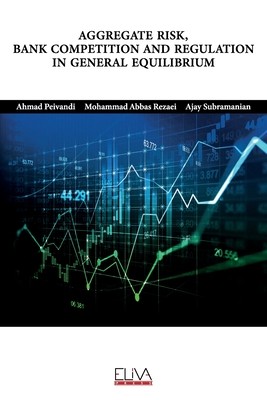
- We will send in 10–14 business days.
- Author: Ahmad Peivandi
- Publisher: Eliva Press
- Year: 2020
- Pages: 68
- ISBN-10: 1952751969
- ISBN-13: 9781952751967
- Format: 15.2 x 22.9 x 0.4 cm, softcover
- Language: English
- SAVE -10% with code: EXTRA
Aggregate Risk, Bank Competition and Regulation in General Equilibrium (e-book) (used book) | bookbook.eu
Reviews
Description
We examine the optimal design of bank regulation in a general equilibrium model. The benchmark unregulated economy has a unique equilibrium in which banks are maximally leveraged and financed entirely via inside equity and deposits. We characterize the efficient allocation and show that the unregulated economy underinvests (overinvests) in risky production when aggregate risk is low (high). We carry out a normative analysis by showing how the efficient allocation can be implemented via capital and reserve requirements, deposit insurance and bailouts. There is a range of efficient regulatory policies with a stricter capital requirement on banks being accompanied by a looser reserve requirement and less deposit insurance. Capital and reserve requirements become stricter as aggregate risk increases. Depositor subsidies are efficient if aggregate risk is below a threshold. When aggregate risk exceeds the threshold, it is efficient to subsidize productive firms by levying taxes (in expectation) on bank depositors and equityholders.
EXTRA 10 % discount with code: EXTRA
The promotion ends in 19d.17:57:02
The discount code is valid when purchasing from 10 €. Discounts do not stack.
- Author: Ahmad Peivandi
- Publisher: Eliva Press
- Year: 2020
- Pages: 68
- ISBN-10: 1952751969
- ISBN-13: 9781952751967
- Format: 15.2 x 22.9 x 0.4 cm, softcover
- Language: English English
We examine the optimal design of bank regulation in a general equilibrium model. The benchmark unregulated economy has a unique equilibrium in which banks are maximally leveraged and financed entirely via inside equity and deposits. We characterize the efficient allocation and show that the unregulated economy underinvests (overinvests) in risky production when aggregate risk is low (high). We carry out a normative analysis by showing how the efficient allocation can be implemented via capital and reserve requirements, deposit insurance and bailouts. There is a range of efficient regulatory policies with a stricter capital requirement on banks being accompanied by a looser reserve requirement and less deposit insurance. Capital and reserve requirements become stricter as aggregate risk increases. Depositor subsidies are efficient if aggregate risk is below a threshold. When aggregate risk exceeds the threshold, it is efficient to subsidize productive firms by levying taxes (in expectation) on bank depositors and equityholders.


Reviews